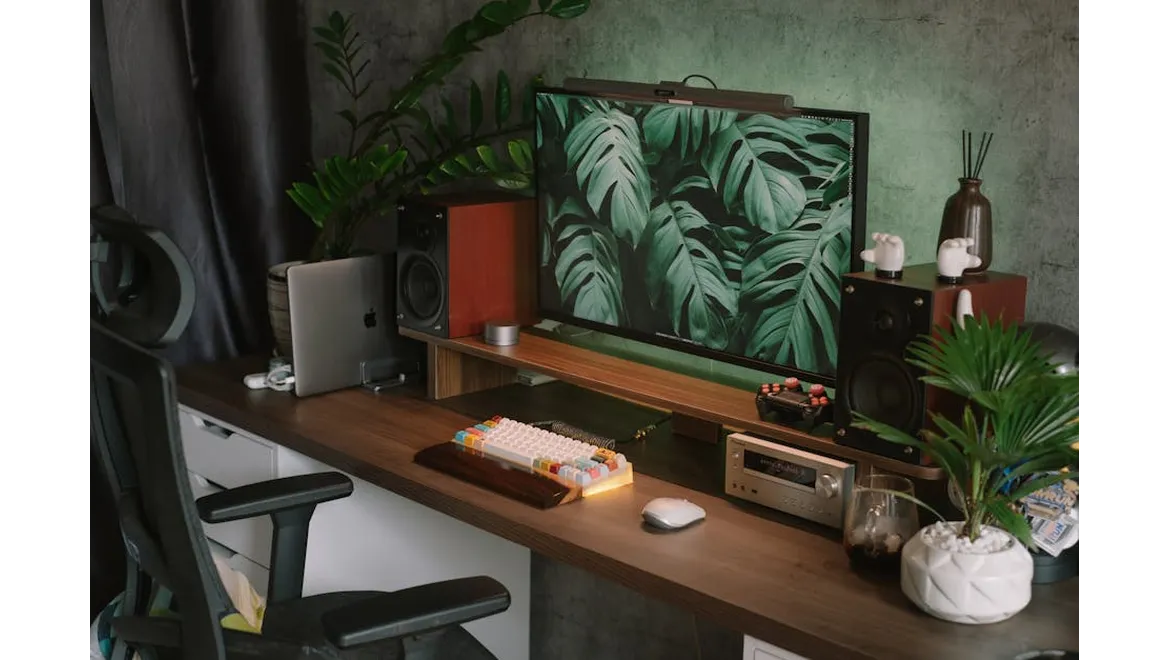Right, so I was chatting with my friend Daisy the other day, and we got onto the subject of home wellness – you know, making your living space a haven. We were both feeling a bit frazzled, and the conversation naturally veered towards creating a proper relaxation zone at home. Daisy had been reading up on biophilic design and was bursting to share her insights, so I thought I’d pass on some of the wisdom. Turns out, it’s not just a fancy buzzword; it’s a genuinely effective way to reduce stress and boost well-being.
What is Biophilic Design Anyway?
Essentially, biophilic design is all about connecting with nature within our built environments. We, as humans, have an innate need to connect with nature – it’s hardwired into our DNA. Daisy explained it brilliantly: “Think about how good you feel after a walk in the woods, right? Biophilic design tries to recreate that feeling indoors.”
It’s not just about adding a few houseplants (although that certainly helps!). It’s about incorporating natural light, materials, textures, and even sounds into your space. Think natural light, wooden floors, stone walls, and the sound of trickling water.
Creating Your Personal Sanctuary
Daisy was really enthusiastic about transforming a spare room into a dedicated relaxation zone. But, even a corner of a room can work wonders, depending on your living situation. The key is to choose a space that feels relatively quiet and removed from the hustle and bustle of daily life. Here’s what Daisy suggested:
-
Natural Materials are Key: Start with the foundation. Daisy advocates for natural flooring like wood or bamboo. “Imagine walking barefoot on a warm wooden floor – instantly calming, isn’t it?” she said. Choose furniture made from natural materials like rattan, wicker, or solid wood. Fabrics should be organic too – think cotton, linen, or wool. “Avoid harsh, synthetic materials,” Daisy stressed. “Go for soft, tactile fabrics that invite you to relax.”
-
Light it Right: Natural light is crucial. Keep windows clear and use sheer curtains to maximise the amount of daylight entering the room. If natural light is limited, use full-spectrum light bulbs to mimic sunlight. Daisy also suggested using dimmable lighting to create a relaxing ambiance in the evenings. “Think warm, soft light rather than harsh, bright light,” she advised. Candles or salt lamps can also add a soothing glow.
-
Bring the Outdoors In: This is where the fun really begins! Incorporate plants – lots of them! Daisy is a big fan of trailing plants like pothos and spider plants, as well as air-purifying plants like snake plants and peace lilies. “Plants not only look beautiful, but they also improve air quality and create a sense of tranquility,” she explained. Consider adding a small indoor water feature, like a tabletop fountain. The sound of trickling water is incredibly relaxing. Even artwork depicting natural landscapes can help to create a sense of connection with nature.
-
Consider a View (If Possible): If you’re lucky enough to have a window with a view of nature, make the most of it! Arrange your furniture to take advantage of the view. If you don’t have a natural view, consider creating one. You could hang a landscape painting or install a green wall.
Yoga and the Home Space
Daisy also pointed out how well biophilic design complements practices like yoga and meditation. Imagine doing your sun salutations in a room filled with natural light, surrounded by plants, and listening to the gentle sound of flowing water! It’s a far cry from a sterile gym environment, isn’t it?
And, if you’re lucky enough to have an orangery, Daisy reckons it’s the perfect space for yoga. The abundance of natural light and the connection to the outdoors create a truly serene atmosphere. Even if you don’t have an orangery, you can still create a similar effect by bringing plants and natural elements into your yoga space.
Orangeries
Orangeries, with their large windows and often glass roofs, are naturally conducive to biophilic design. They flood the space with light and provide excellent views of the garden, effectively blurring the lines between indoors and outdoors. They are ideal for housing a diverse range of plants, from small succulents to larger potted trees, further enhancing the sense of being immersed in nature. The increased natural light is not only beneficial for plant growth but also stimulates vitamin D production in the body, boosting mood and overall health.
So, to sum it all up, integrating biophilic design into your home isn’t just about aesthetics; it’s about creating a space that actively promotes well-being. By incorporating natural materials, maximising natural light, bringing the outdoors in, and creating a relaxing ambiance, you can transform your home into a true sanctuary where you can de-stress, recharge, and reconnect with nature and yourself. It’s a holistic approach that benefits both your mind and body.


